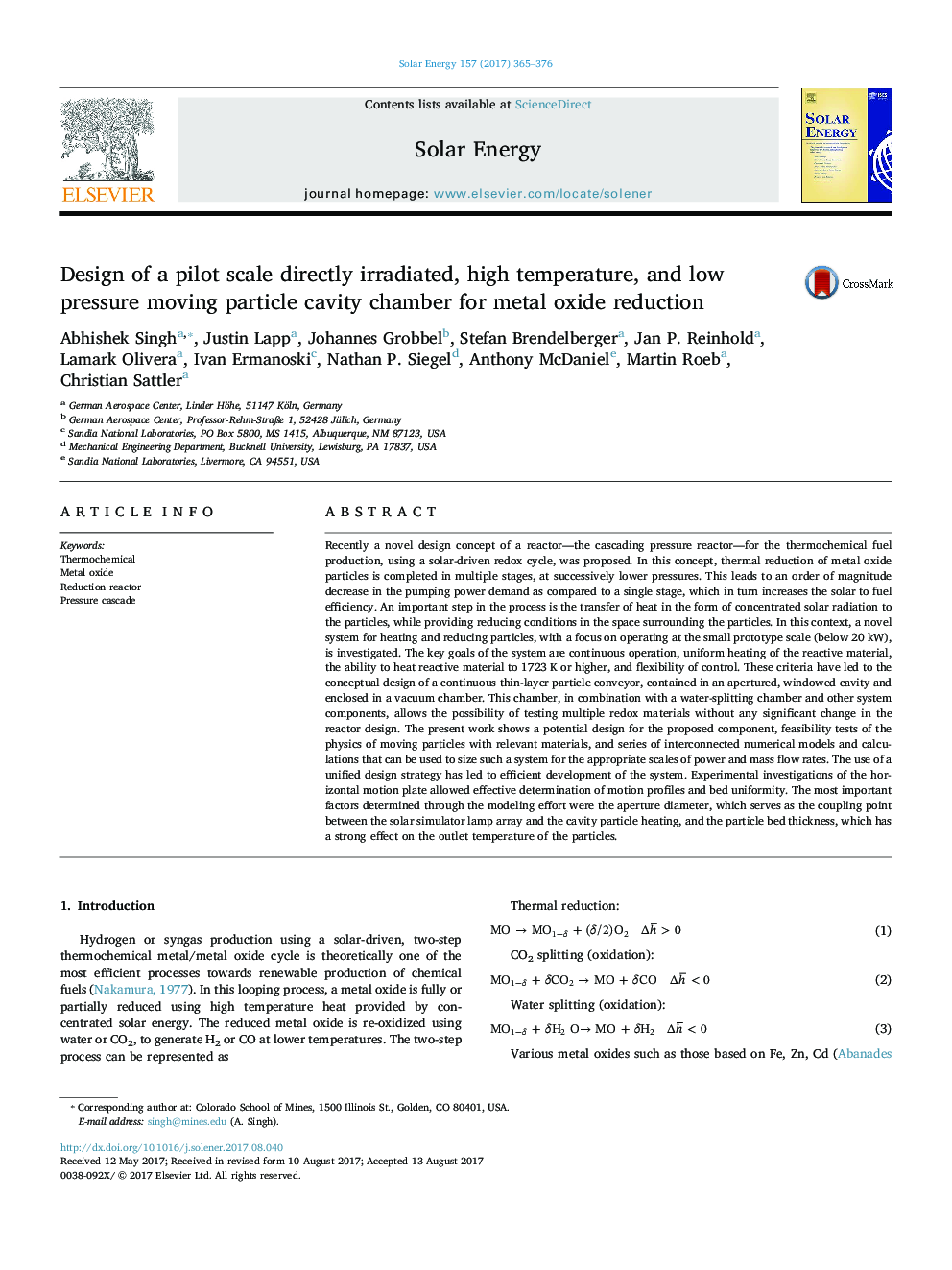| کد مقاله | کد نشریه | سال انتشار | مقاله انگلیسی | نسخه تمام متن |
|---|---|---|---|---|
| 5450880 | 1513061 | 2017 | 12 صفحه PDF | دانلود رایگان |
- Design of a high temperature, low pressure moving particle reduction chamber.
- Experimental validation of particle transportation in a horizontal motion conveyor.
- Developed of coupled radiation-conduction model for a moving particle bed.
- Assessment of particle bed thickness affecting particle outlet temperature.
- Numerical model development for sizing aperture, cavity, insulation and window.
Recently a novel design concept of a reactor-the cascading pressure reactor-for the thermochemical fuel production, using a solar-driven redox cycle, was proposed. In this concept, thermal reduction of metal oxide particles is completed in multiple stages, at successively lower pressures. This leads to an order of magnitude decrease in the pumping power demand as compared to a single stage, which in turn increases the solar to fuel efficiency. An important step in the process is the transfer of heat in the form of concentrated solar radiation to the particles, while providing reducing conditions in the space surrounding the particles. In this context, a novel system for heating and reducing particles, with a focus on operating at the small prototype scale (below 20Â kW), is investigated. The key goals of the system are continuous operation, uniform heating of the reactive material, the ability to heat reactive material to 1723Â K or higher, and flexibility of control. These criteria have led to the conceptual design of a continuous thin-layer particle conveyor, contained in an apertured, windowed cavity and enclosed in a vacuum chamber. This chamber, in combination with a water-splitting chamber and other system components, allows the possibility of testing multiple redox materials without any significant change in the reactor design. The present work shows a potential design for the proposed component, feasibility tests of the physics of moving particles with relevant materials, and series of interconnected numerical models and calculations that can be used to size such a system for the appropriate scales of power and mass flow rates. The use of a unified design strategy has led to efficient development of the system. Experimental investigations of the horizontal motion plate allowed effective determination of motion profiles and bed uniformity. The most important factors determined through the modeling effort were the aperture diameter, which serves as the coupling point between the solar simulator lamp array and the cavity particle heating, and the particle bed thickness, which has a strong effect on the outlet temperature of the particles.
Journal: Solar Energy - Volume 157, 15 November 2017, Pages 365-376
